RELG 433 - Biblical Archaeology
Çatal Höyük
Images in the text are linked to larger photos - click on them to see the larger pictures.
Hover the mouse over the images to see their captions and copyright credits.
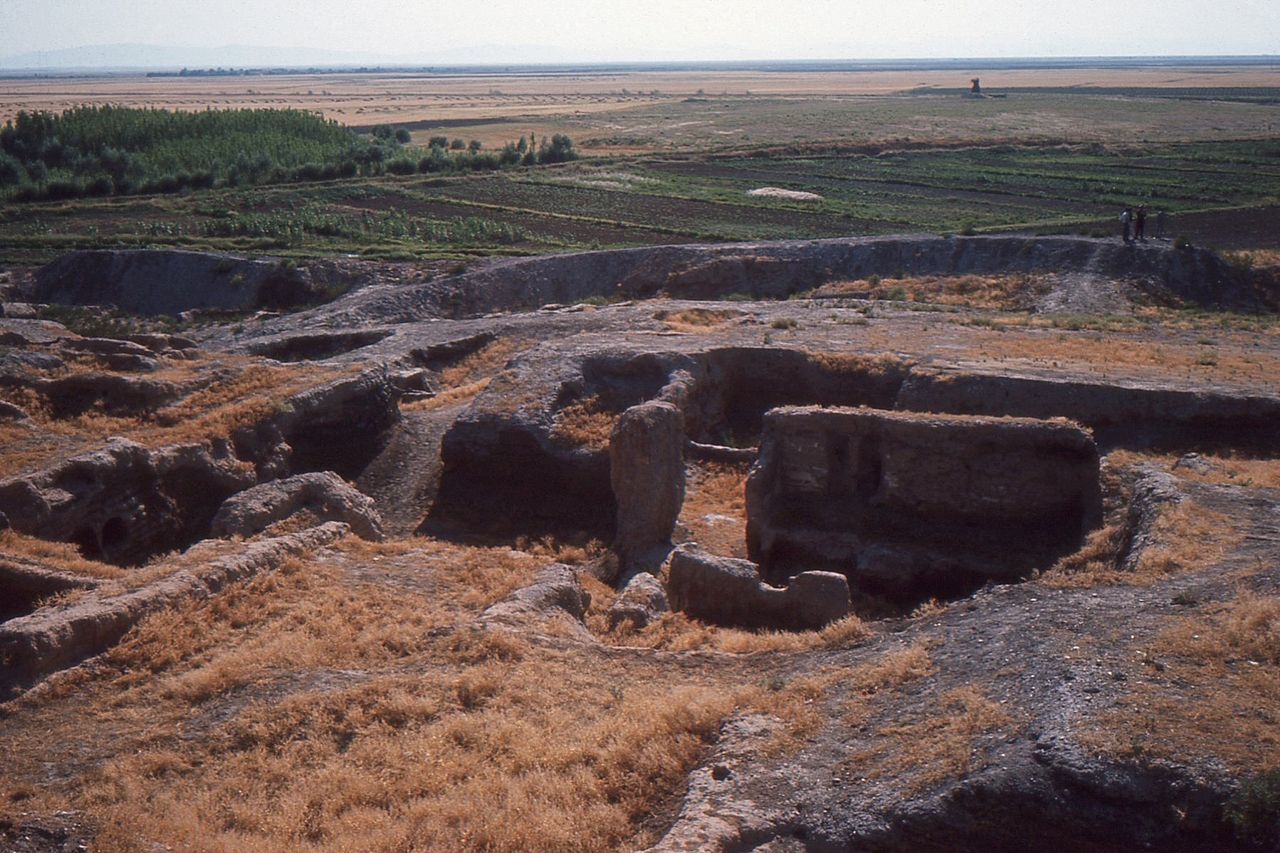 Çatal Höyük (kha-TAHL hoo-yook) is a 65-foot-high tel, or mound formed by successive layers of villages, which covers about 32 acres in south-central Turkey.
Çatal Höyük (kha-TAHL hoo-yook) is a 65-foot-high tel, or mound formed by successive layers of villages, which covers about 32 acres in south-central Turkey.
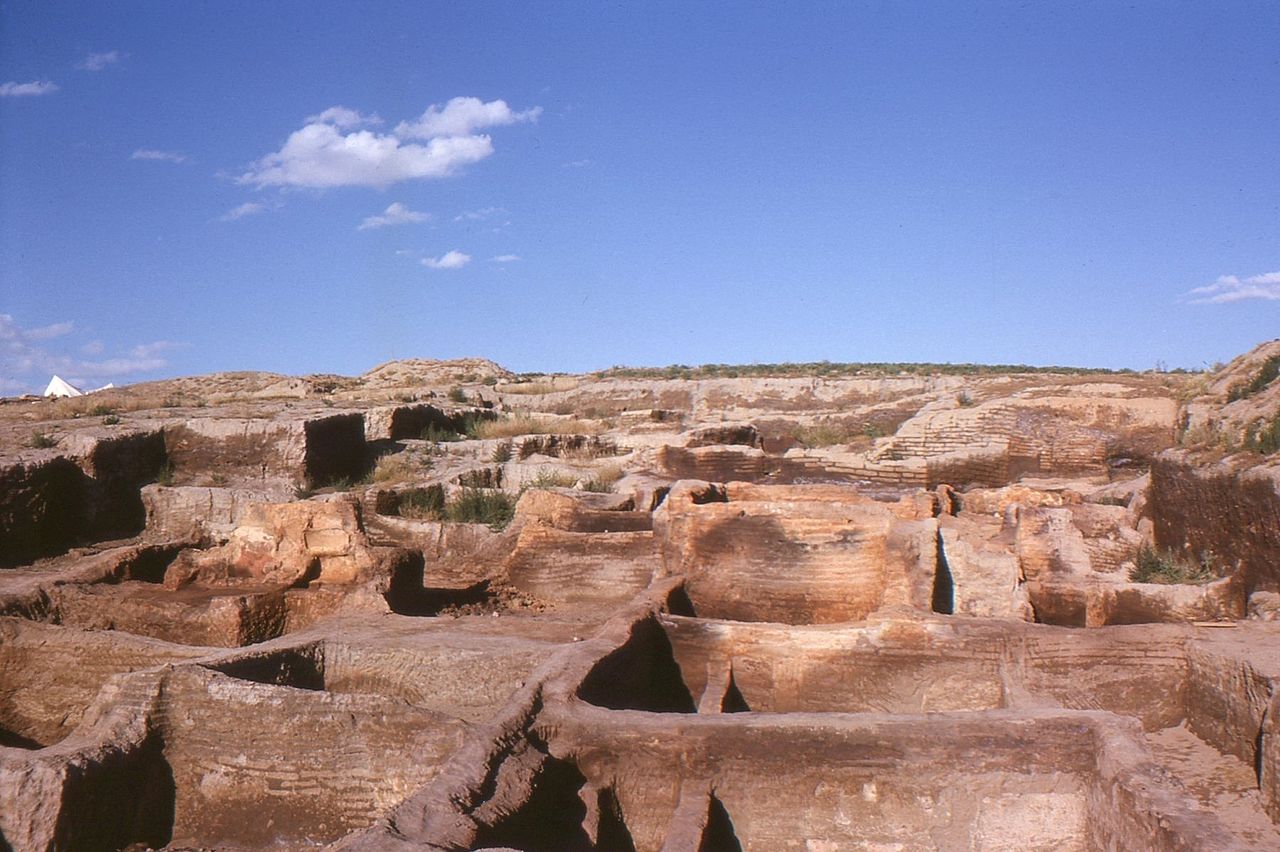 Around 9,000 years ago a group of hunter-gatherers began to harvest and cultivate crops on the grassy hills - they had discovered a new means of survival - farming. They settled there, and over the next millennium the settlement grew until there were an estimated 10,000 people living there.
Around 9,000 years ago a group of hunter-gatherers began to harvest and cultivate crops on the grassy hills - they had discovered a new means of survival - farming. They settled there, and over the next millennium the settlement grew until there were an estimated 10,000 people living there.
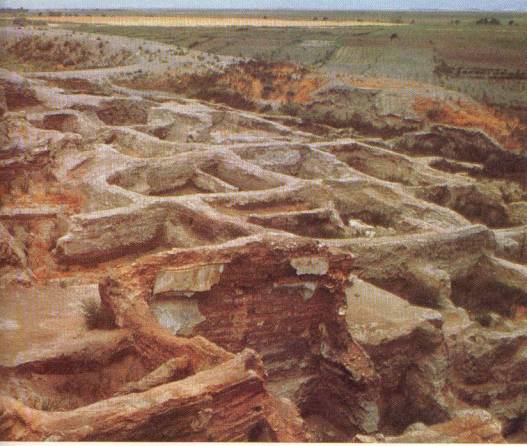 The Neolithic settlement at Çatal Höyük was first excavated in 1961, when James Mellaart of the British Institute of Archaeology at Ankara sank a trench into the site's 65-foot-high mound.
The Neolithic settlement at Çatal Höyük was first excavated in 1961, when James Mellaart of the British Institute of Archaeology at Ankara sank a trench into the site's 65-foot-high mound.
 Over the next five years he uncovered a honeycomb of almost identical, rectangular, flat-roofed mud-brick houses, which had square living rooms leading into long, narrow storerooms.
Over the next five years he uncovered a honeycomb of almost identical, rectangular, flat-roofed mud-brick houses, which had square living rooms leading into long, narrow storerooms.
Each of the houses contained about 270 square feet of living space, suggesting that they were residences of nuclear families. Windows were placed up high, near the roof, and the open spaces between the houses were used as garbage dumps.
The houses had no doors, but instead each had a hole in the roof, much like a Navajo Kiva. The inhabitants used portable ladders to enter their houses through the roof.
![]()
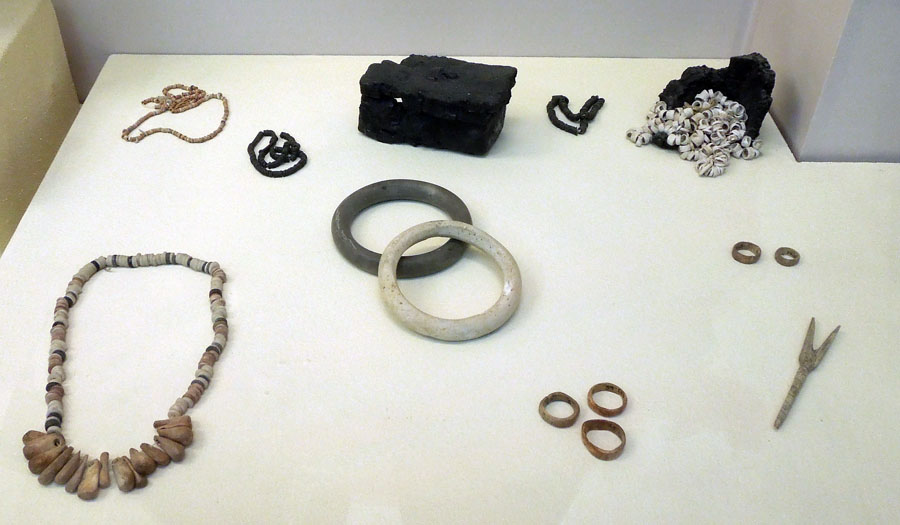 Mellaart's team found both earthenware and wooden vessels, as well as small beads and pendants hammered out of copper.
Mellaart's team found both earthenware and wooden vessels, as well as small beads and pendants hammered out of copper.
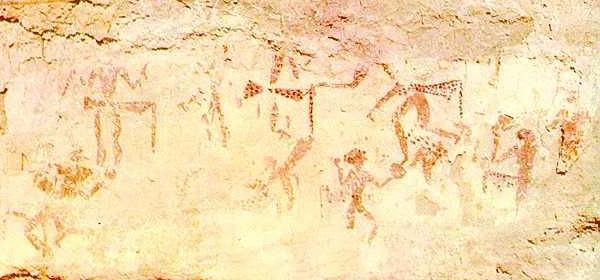
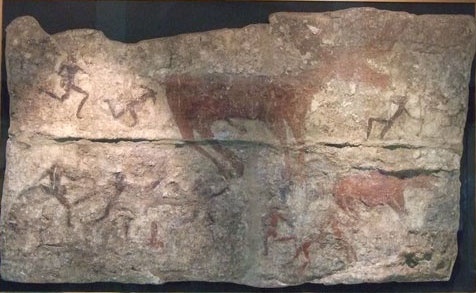 They also found other works of art - the walls of many houses were decorated with images of bulls, lions, leopards, flowers, stars and human hands. Some walls had terrifying depictions of vultures attacking headless humans.
They also found other works of art - the walls of many houses were decorated with images of bulls, lions, leopards, flowers, stars and human hands. Some walls had terrifying depictions of vultures attacking headless humans.
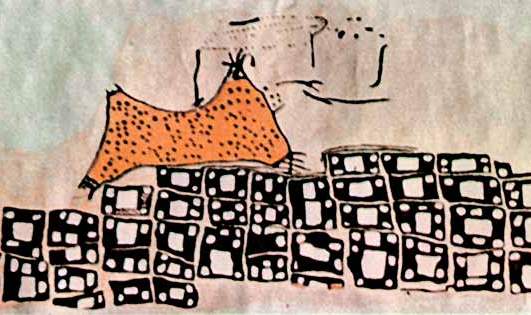 Among these remarkable wall paintings and reliefs was a painting which Mellaart interpreted as a picture of an erupting volcano. This is perhaps the world's oldest landscape painting, and indicates that they had encountered volcanic activity somewhere in their past. In 2013 volcanic deposits from a nearby volcano were analysed and showed that it had probably had a small-scale eruption at about the time of the settlement.
Among these remarkable wall paintings and reliefs was a painting which Mellaart interpreted as a picture of an erupting volcano. This is perhaps the world's oldest landscape painting, and indicates that they had encountered volcanic activity somewhere in their past. In 2013 volcanic deposits from a nearby volcano were analysed and showed that it had probably had a small-scale eruption at about the time of the settlement.
 The site contained many small female figurines with exaggerated sexual organs, who often appear to be in childbirth or the later stages of pregnancy. Mellaart postulated that Çatal Höyük was a matriarchal society engaged in cultic worship of a Mother Goddess.
The site contained many small female figurines with exaggerated sexual organs, who often appear to be in childbirth or the later stages of pregnancy. Mellaart postulated that Çatal Höyük was a matriarchal society engaged in cultic worship of a Mother Goddess.
Çatal Höyük's art was preserved by the white mud plaster which the inhabitants applied to the walls at frequent intervals. One building had 120 layers of protective coating.
Mellaart's spectacular career at Çatal Höyük came to an abrupt halt when the Turkish government accused him of smuggling artifacts out of the country, and banished him from the country. Çatal Höyük was then abandoned, with its exposed mudbrick walls left prey to the elements and to looters.
In 1993 excavations at Çatal Höyük were resumed under the direction of British archaeologist Ian Hodder. Hodder's international team of archaeologists, scientists and conservators found that most of the houses contained private areas dedicated to cultic worship - suggesting that the community was probably not organized under a central priestly authority, as Mellaart had conjectured.
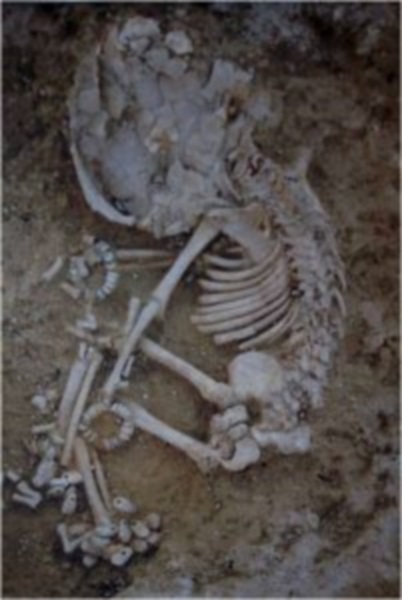 According to Hodder, the cultic rituals practiced at Çatal Höyük probably centered on death and the afterlife.
According to Hodder, the cultic rituals practiced at Çatal Höyük probably centered on death and the afterlife.
 It appears that two or three generations of each family's dead would be buried beneath the floor of their living room - then the dwelling would be abandoned and burned. The family would then level the area and build a new house on top of the old. One poignant find was the burial of a baby - the skeleton wore bracelets of colored beads around each wrist. Careful burial accompanied by grave goods generally indicates a belief in an after-life.
It appears that two or three generations of each family's dead would be buried beneath the floor of their living room - then the dwelling would be abandoned and burned. The family would then level the area and build a new house on top of the old. One poignant find was the burial of a baby - the skeleton wore bracelets of colored beads around each wrist. Careful burial accompanied by grave goods generally indicates a belief in an after-life.
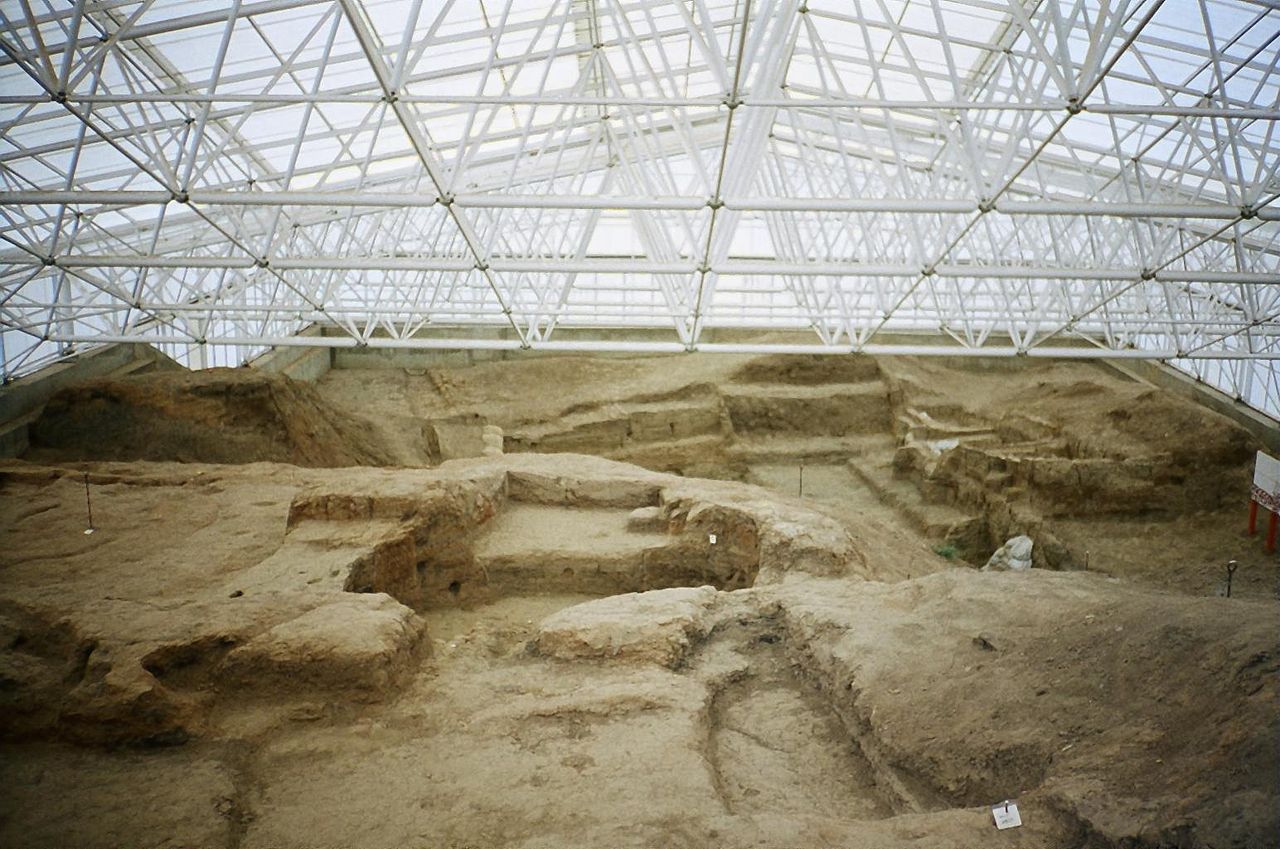 Only a small part of Çatal Höyük's mound has been excavated, but decades of neglect have made the exposed ruins vulnerable. On-site labs are being built to try to protect the fragile mud-brick walls (though this has proved largely futile), and delicate finds have been removed to museums. Shelters will eventually be constructed over the site's exposed areas, but the size and extreme fragility of Çatal Höyük make it difficult to protect.
Only a small part of Çatal Höyük's mound has been excavated, but decades of neglect have made the exposed ruins vulnerable. On-site labs are being built to try to protect the fragile mud-brick walls (though this has proved largely futile), and delicate finds have been removed to museums. Shelters will eventually be constructed over the site's exposed areas, but the size and extreme fragility of Çatal Höyük make it difficult to protect.
Copyright © 1999 Shirley J. Rollinson, all Rights Reserved